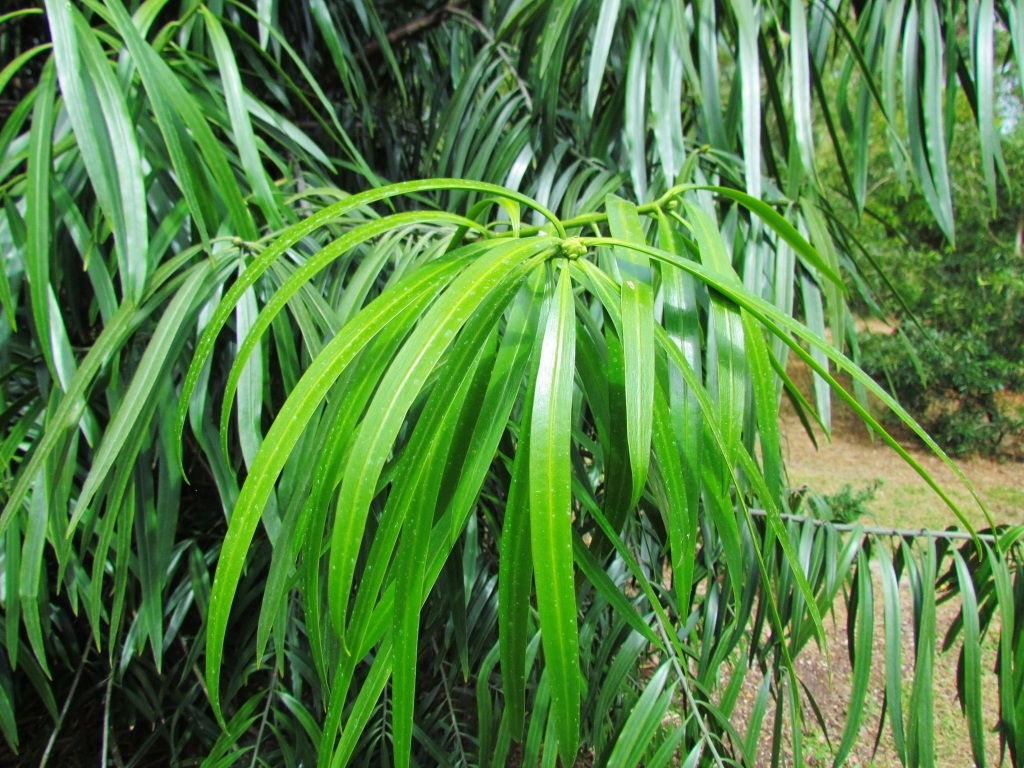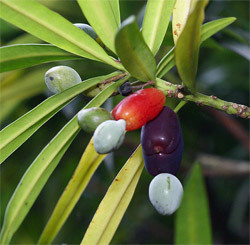Podocarpus rumphii was first described in 1847 by Carl Ludwig Blume (1796-1862) is his work, Rumphia, sive commentationes botanicae imprimis de plantis Indiae orientalis, volume 3, ©1847 Bruxellis & Lugduni Batavorum.
Description. It is an evergreen coniferous species of tree which will grow to mature heights of 110 to 140 feet (35 - 45 m) tall with a domed to spreading crown with straight branches that are densely foliaged at the tips. The buds are conical and 0.1 to 0.18 inch (2.5 - 4.5 mm) long, tightly held by triangular scales with free acute tips. The leaves are thick, leathery and stiff, lustrous dark-green above and paler beneath, linear, 3.5 to 8.5 inches (90 - 220 mm) long and 0.4 to 1 inch (10 - 25 mm) wide, longest on immature or shaded branches and shortest at the exposed tops. They have an acute tip and raised midrib on both leaf surfaces. The seed cones appear solitary on a (7 - 10 mm) stalk and have a fleshy yellow receptacle that turns red when mature. They are 0.3 to 0.5 inch (8 - 12 mm) long and 0.2 to 0.32 inch (5 - 8 mm) wide and usually holds 1 or 2 ovoid seeds which are 0.24 to 0.32 inch (6 - 8 mm) in diameter.
Distribution. This species is native to Philippines and Taiwan - Hengchun peninsula where it grows scattered in broad-leaved forests. Based on data from 42 collection localities, it grows at elevations of around 3,200 feet (1,000 m) above sea level. Within its range, mean annual temperature is 72°F (22°C), with an average minimum in the coldest month of 60ºF (16°C), and a mean annual precipitation of 110 inches (2,790 mm).

